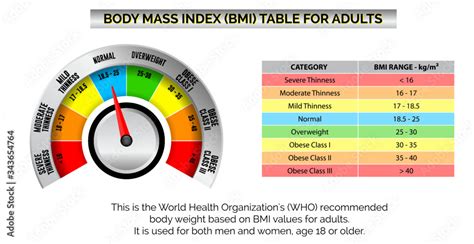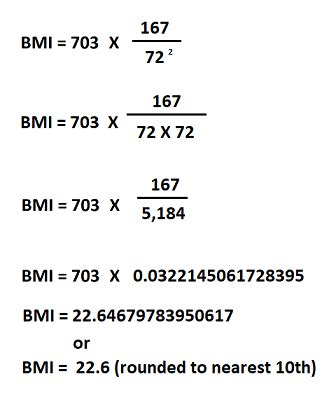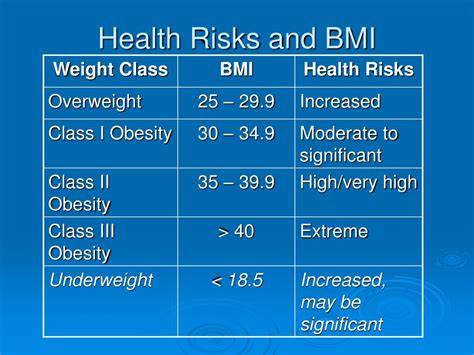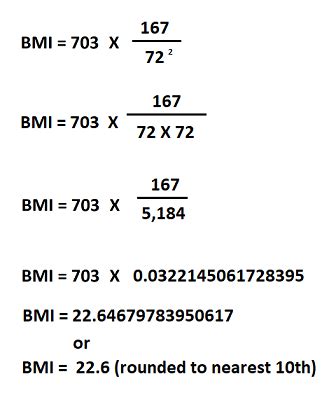Intro
Body Mass Index, commonly referred to as BMI, is a widely used measurement to assess an individual's weight status. It is calculated by dividing a person's weight in kilograms by the square of their height in meters. Understanding BMI is crucial for maintaining a healthy lifestyle, as it can help identify potential health risks associated with being underweight, overweight, or obese. In this article, we will delve into the world of BMI, exploring its significance, calculation, and implications for our health.
The importance of BMI lies in its ability to provide a general indication of whether a person's weight is in a healthy range for their height. This measurement is not only useful for individuals but also for healthcare professionals, who use it as a tool to assess the risk of weight-related health problems. Moreover, BMI is a simple and non-invasive method, making it accessible to people of all ages and backgrounds. As we navigate the complexities of BMI, it becomes clear that this measurement is more than just a number; it is a key to unlocking a healthier, happier life.
The calculation of BMI is straightforward, and its interpretation is relatively simple. However, understanding the implications of BMI readings requires a deeper dive into the subject. For instance, a BMI between 18.5 and 24.9 is generally considered normal, while a BMI below 18.5 indicates underweight, and a BMI above 25 suggests overweight or obesity. These categories are not merely theoretical; they are linked to real health outcomes, such as the risk of developing diabetes, heart disease, and certain types of cancer. As we explore the intricacies of BMI, we begin to appreciate the significance of maintaining a healthy weight and the role BMI plays in this pursuit.
Introduction to BMI

Benefits of Understanding BMI
The benefits of understanding BMI are numerous. For one, it provides individuals with a clear understanding of their weight status, enabling them to take proactive steps towards achieving a healthy weight. This, in turn, can reduce the risk of weight-related health problems, improve overall well-being, and enhance quality of life. Additionally, understanding BMI can help individuals set realistic weight loss or gain goals, making it easier to achieve and maintain a healthy weight.How BMI is Calculated

Interpreting BMI Results
Interpreting BMI results is crucial for understanding an individual's weight status. The World Health Organization (WHO) provides the following BMI categories: - Underweight: BMI < 18.5 - Normal weight: BMI = 18.5-24.9 - Overweight: BMI = 25-29.9 - Obese: BMI ≥ 30 These categories serve as a guideline, helping individuals and healthcare professionals understand the implications of BMI readings and make informed decisions about health and wellness.BMI and Health Risks

Strategies for Maintaining a Healthy BMI
Maintaining a healthy BMI requires a combination of healthy lifestyle choices, including: - A balanced diet: Focus on consuming a variety of whole, unprocessed foods, such as fruits, vegetables, whole grains, lean proteins, and healthy fats. - Regular physical activity: Aim for at least 150 minutes of moderate-intensity aerobic exercise, or 75 minutes of vigorous-intensity aerobic exercise, or a combination of both, per week. - Stress management: Engage in stress-reducing activities, such as meditation, yoga, or deep breathing exercises, to help manage stress and promote overall well-being. By incorporating these strategies into daily life, individuals can reduce their risk of weight-related health problems and maintain a healthy BMI.Common Misconceptions About BMI

Addressing BMI Limitations
To address the limitations of BMI, healthcare professionals and individuals can use additional measurements, such as: - Waist circumference: Measures the distance around the natural waistline, providing an indication of central obesity. - Body fat percentage: Measures the percentage of body fat, providing a more accurate assessment of body composition. - Skinfold measurements: Measures the thickness of skinfolds at specific points on the body, providing an indication of subcutaneous fat. By using these additional measurements, individuals can gain a more comprehensive understanding of their weight status and overall health.Conclusion and Next Steps

Final Thoughts
As we reflect on the significance of BMI, it becomes clear that this measurement is more than just a number; it is a tool for promoting health and wellness. By embracing the concept of BMI and its limitations, individuals can take control of their health, making informed decisions about diet, exercise, and lifestyle choices. As we move forward, it is essential to remember that maintaining a healthy weight is a journey, not a destination, and that BMI is just one aspect of the broader picture of overall health.What is BMI, and how is it calculated?
+BMI, or Body Mass Index, is a measurement used to assess an individual's weight status. It is calculated by dividing a person's weight in kilograms by the square of their height in meters.
What are the different BMI categories, and what do they mean?
+The World Health Organization (WHO) provides the following BMI categories: underweight (BMI < 18.5), normal weight (BMI = 18.5-24.9), overweight (BMI = 25-29.9), and obese (BMI ≥ 30). These categories serve as a guideline, helping individuals and healthcare professionals understand the implications of BMI readings.
How can I maintain a healthy BMI, and what are the benefits of doing so?
+Maintaining a healthy BMI requires a combination of healthy lifestyle choices, including a balanced diet, regular physical activity, and stress management. The benefits of maintaining a healthy BMI include reducing the risk of weight-related health problems, improving overall well-being, and enhancing quality of life.
We hope this article has provided you with a comprehensive understanding of BMI and its significance for maintaining a healthy lifestyle. If you have any further questions or would like to share your thoughts on the topic, please do not hesitate to comment below. Additionally, if you found this article informative and helpful, please consider sharing it with others who may benefit from this information. Together, we can promote a culture of health and wellness, one conversation at a time.
